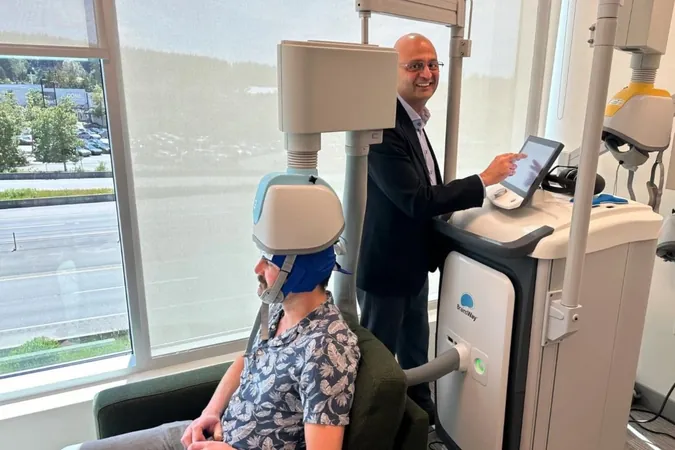
Alarming Findings: RSV Hospitalization Risks for Adults Revealed in New Study!
2024-11-21
Author: Jacob
Introduction
A recent study has revealed that a significant number of adults with outpatient medically attended respiratory syncytial virus (MA-RSV) infections are at risk of hospitalization within 28 days. This alarming trend is particularly pronounced among high-risk groups, as detailed in a research paper published online on November 19 in JAMA Network Open.
Study Overview
Dr. Suzanne N. Landi and her team from Pfizer Inc., based in New York City, conducted a comprehensive analysis to determine the absolute risk of all-cause hospitalization following outpatient MA-RSV infections in adults. They utilized a robust cohort study design, tapping into data from three extensive databases: the Optum deidentified Integrated Claims-Clinical dataset, TriNetX Linked, and the Veradigm Network Electronic Health Record (VNEHR) database, which is linked to claims data.
Key Findings
Over a six-season period from October 1, 2016, to September 30, 2022, the study analyzed 67,239 cases of MA-RSV infections. The focus was not only on overall hospitalization rates but also on high-risk subgroups comprising individuals with asthma, chronic obstructive pulmonary disease (COPD), congestive heart failure (CHF), or those aged 65 years and older.
Hospitalization Rates
The data revealed concerning hospitalization rates, with 6.2 percent of patients hospitalized from the Optum database, 6.0 percent from TriNetX, and 4.5 percent from the VNEHR database. Within the high-risk subgroup, these figures climbed higher, with hospitalization rates of 7.6 percent in Optum, 8.5 percent in TriNetX, and 6.5 percent in VNEHR, underscoring the urgent need for targeted preventive measures.
Vulnerable Populations
Notably, older adults (65 years and older) made up a substantial portion of the study population, ranging from 14.0 to 54.5 percent, which raises significant public health concerns given the vulnerability of this age group. Comorbidity prevalence was also striking, with COPD affecting 20.0 to 30.5 percent, CHF in 14.6 to 24.4 percent, and asthma in 30.0 to 34.4 percent of patients.
Conclusion
The authors of the study emphasize the critical unmet medical need for effective outpatient interventions and preventative strategies that can mitigate the risk of hospitalization due to respiratory syncytial virus. As RSV seasons become more pronounced, healthcare providers must focus on enhancing preventive care to protect vulnerable populations.
Call to Action
With these findings, the call for action has never been clearer—could there be new policies on the horizon aimed at safeguarding the health of adults facing the threat of RSV? Stay tuned to see how health organizations respond to this urgent public health challenge!









 Brasil (PT)
Brasil (PT)
 Canada (EN)
Canada (EN)
 Chile (ES)
Chile (ES)
 España (ES)
España (ES)
 France (FR)
France (FR)
 Hong Kong (EN)
Hong Kong (EN)
 Italia (IT)
Italia (IT)
 日本 (JA)
日本 (JA)
 Magyarország (HU)
Magyarország (HU)
 Norge (NO)
Norge (NO)
 Polska (PL)
Polska (PL)
 Schweiz (DE)
Schweiz (DE)
 Singapore (EN)
Singapore (EN)
 Sverige (SV)
Sverige (SV)
 Suomi (FI)
Suomi (FI)
 Türkiye (TR)
Türkiye (TR)